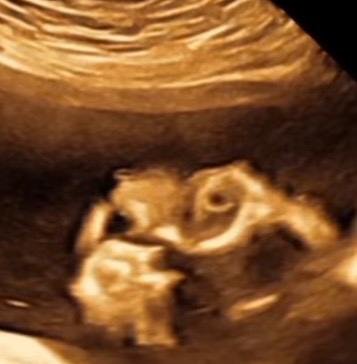cleft lip and palate fetal ultrasound
يوجد صور في المقال من إبداع دكتوره Dr noor beskri من ليبيا
Ultrasound diagnosis:
The typical cleft lip appears as a linear defect extending from one side of the lip into the nostril. Cleft palate associated with cleft lip may extend through the alveolar ridge and hard palate, reaching the floor of the nasal cavity or even the floor of the orbit.Both transverse and coronal planes are necessary for the diagnosis.
https://youtu.be/Se_H_clEkUs?si=6tnoCzDJKBwagV4s
Color Doppler may be useful to demonstrate flow across the palate in the case of cleft palate.Diagnosis of isolated cleft palate is difficult.Diagnosis of cleft lip and palate at 11-13 weeks’ gestation can be achieved by targeted examination of the retronasal triangle in a coronal view and the maxillary gap in the standard mid-sagittal view of the face used routinely in screening for chromosomal abnormalities.Associated abnormalities:Chromosomal abnormalities, mainly trisomies 13 and 18, are found in 1–2% of cases. Unilateral cleft lip is not associated with chromosomal abnormalities.Associated with any one of >400 syndromes in 30% of cases. The most common are: Goldenhar syndrome (sporadic; anophthalmia, ear defects, facial cleft, facial macrosomia), Treacher–Collins syndrome (autosomal recessive or autosomal dominant with 60% de novo mutations; hypoplasia of the maxilla and zygomatic bone, micrognathia, cleft palate, malformed or absent ears), Pierre–Robin anomalad (micrognathia or retrognathia, cleft palate and glossoptosis. In half of cases this a sporadic isolated finding and in the other half it is associated with other anomalies or with recognized genetic and non-genetic syndromes).Investigations:Detailed ultrasound examination.Invasive testing for karyotyping and array.Follow-up:Follow-up should be standard.Prenatal consultation with multidisciplinary team.Delivery:Standard obstetric care and delivery.Prognosis:This primarily depends on the presence and type of associated anomalies.Isolated: Good prognosis and normal survival.Surgical repair is at 3-6 months of age.Long-term issues in children with cleft lip and palate include dental abnormalities, hearing and olfactory problems, midface hypoplasia, and psychological problems. About 25% have speech abnormalities requiring secondary palate surgery and speech therapy. Dental anomalies include missing, extra, or malpositioned teeth and they require braces on their permanent teeth. Most children have hearing abnormalities and may require myringotomy with placement of bilateral tympanotomy tubes to improve hearing. Regular psychological screening is recommended to assess the child’s cognitive development, behavior, and self-image.Recurrence:Isolated: 5% if one sibling or parent is affected and 10% if two siblings are affected.Syndromic: all forms of inheritance have been described, including autosomal dominant, autosomal recessive, X-linked dominant and X-linked recessive


ClassificationSeveral classification systems exist. The Nyberg 1995 antenatal ultrasound classification system is one that correlates very well with the severity of the defect with outcomes and is divided into five types 5:type I: isolated cleft lip alone type II: unilateral cleft lip and palate type III: bilateral cleft lip and palatetype IV: midline/median cleft lip and palate type V: facial clefts associated with the amniotic band syndrome or the limb-body-wall complexAn isolated cleft palate is almost impossible to diagnose in utero and is not part of this classification.

